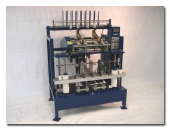Theoretically, azolla, due to its cyanobacterium associate, has the potential to produce BMAA, which is a neurotoxin, although nobody seems to know under what conditions it might be prone to do that. It might be more prudent to use duckweed instead if you or animals are ever going to eat it. Duckweed as far as I know doesn't have that problem.
I have a stock tank that I grow duckweed in for my aquaponic system (fish food), and it has made such a thick mat that the water isn't really evaporating much at all, even though our temps have been stinking hot the last couple of weeks. Also, the tank isn't breeding mosquitoes anymore, as they can't get to the water surface to lay their eggs.
Did somebody else mention this link?
http://theazollafoundation.org



